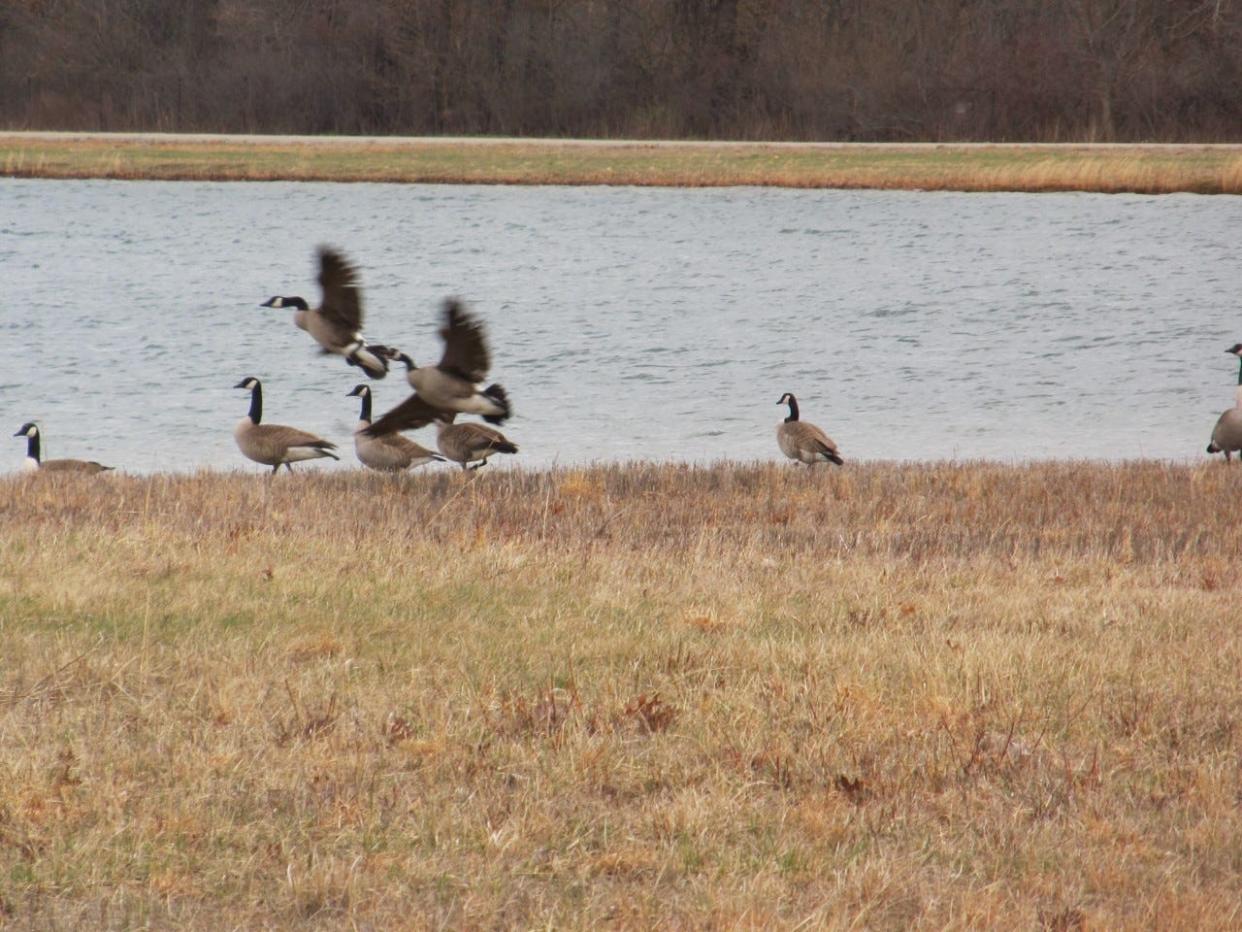Michigan DNR grant to fund improvements at Crystal Waters State Game Area

Work will begin later this year to improve fishing and wildlife habitat at a new state game area in northwest Monroe County.
The Crystal Waters State Game Area, which was established after the state purchased the land in September 2021, is included in a series of conservation projects funded by a recently awarded grant. The 680-acre site is home to the only publicly accessible inland lakes in Monroe County.
The Michigan Department of Natural Resources earlier this month announced the award of over $1.7 million in Fisheries Habitat Grants along with matching partner contributions of over $3.2 million that would help rehabilitate and protect valuable fish habitats around the state.
Crystal Waters is classified by the DNR Lake Erie Management Unit as a Priority Habitat Conservation Project. The site was home to a former gravel and sand quarry and was transformed into land for hunting, fishing, and other outdoor recreation. There are seven human-made lakes on the property. The grant work would focus primarily on the second-largest body of water, known as the Sand Pit, with any leftover funds going toward two of the smaller lakes o the west side of the property.
A DNR fisheries survey in 2016 determined the first in some of the lakes had poor growth and a fish community with very little diversity. Largemouth bass, bluegill, and hybrid sunfish make up the majority of the population, which were the result of stocking efforts.
"We're trying to improve the habitats in these lakes," said John Buszkiewicz, a fisheries biologist at the DNR. "We want to make the (aquatic) habitat as good as it can be. They were basically just holes in the ground not too long ago."
Transforming the lakes into a more natural habitat is the overall goal, Buszkiewicz said. Being artificially created, the lakes are lacking woody materials, like trees around the shoreline. Introducing small, downed trees around the lake edges would increase the overall health of the ecosystem.
The lack of forage in and around the lake leads to fewer protective habitats and higher numbers of predation against the fish population. That has led to both lower and smaller populations of fish.
"In the Sand Pit, we did a fisheries survey back in 2016 and we saw pretty poor growth of the panfish, and that we were missing some smaller size classes of bluegill," Buszkiewicz said. "This habitat improvement should produce more invertebrates for the smaller bluegill and add safer areas for the adults to spawn. The smaller bluegill could also hide from predators in these spaces of the woody habitat.
"We're hoping the productivity will increase so the smaller fish can have more food to eat and places to hide from predators. We're hoping to see improved growth, more of those missing size classes in the future, and just more fish overall.
The proposed project would be one of the first of this size and scope in the state. The DNR adopted the idea from similar projects conducted by biologists in Wisconsin.
"In the state of Michigan, there are a couple of projects that are starting to do this, but in this area, there haven't been too many projects of this size," Buszkiewicz said. "A lot of lakes have installed woody habitat for shoreline stabilization and restoration to prevent erosion and protect shorelines from wave energy. But this is specifically for fish habitat."
Small trees and limbs would be used from areas around the Crystal Waters site and other nearby properties. Site visits over the next few months will identify the best sources. The plan is to install two or three structures with a wide variety of tree species between 4-16 inches in diameter for every 50 feet of shoreline.
Selected areas would be left clear and open for people to fish from shore, wade, or launch canoes or kayaks.
Work on the Sand Pit lake is expected to begin this winter and smaller lakes in the winter of 2024 if funds remain. Working in the winter allows the woody structures to be dragged out onto the ice and placed into the proper position.
"In the spring, once the ice melts, we'll be able to adjust and evaluate how those structures have settled in," Buszkiewicz said. "When the time comes where the ice is (safe) and we can get out there to drop them, we'll do that, but we'll also have a backup plan if the ice isn't good."
Until the habitat and overall productivity of the lakes improves, anglers at Crystal Waters are restricted to catch-and-release fishing only. That is unlikely to change anytime soon, Buszkiewicz said.
"These lakes are a really nice family fishing opportunity right now," he said. "The people that go and fish there have a great experience and don't seem to be too upset that it's catch and release. … It's something we'll continue to evaluate and keep talking to people about."
The Michigan DNR predicts it will take between 3-5 years to observe the effects of the project on the fish community, but the benefits will continue indefinitely into the future. The trees placed into the lake could last 75 years or more.
In addition to improving fish habitat, the project also will benefit other wildlife in the area. The woody structures provide perches for birds, loafing and basking areas for turtles and waterfowl, and feeding platforms for mink and other mammals.
This article originally appeared on The Monroe News: Michigan DNR grant funds improvements at Monroe County state game area
